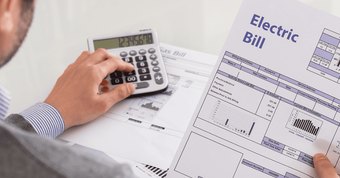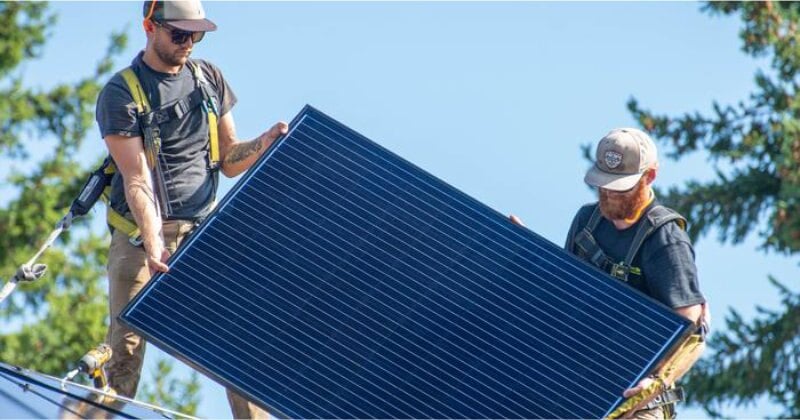Managing household expenses can be particularly challenging for seniors living on fixed incomes. One significant monthly cost is the electricity bill, but there are various strategies and programs available to help seniors reduce these costs. This article explores several ways seniors can access cheaper electricity, from government assistance programs to energy-saving tips.

1. Government Assistance Programs
Several government programs are designed to help low-income households, including seniors, manage their utility bills. These programs provide financial assistance or discounts to eligible individuals.
-
Low-Income Home Energy Assistance Program (LIHEAP): LIHEAP provides financial assistance to help cover heating and cooling costs. Eligibility is based on income and household size. Seniors can apply through their local LIHEAP office. Potential Savings: Up to $500 per year.
-
Weatherization Assistance Program (WAP): WAP helps reduce energy costs by improving the energy efficiency of homes. Services include insulation, window repairs, and heating system upgrades. Seniors can apply through their state weatherization agency. Potential Savings: Up to $300 per year on energy bills.
-
State and Local Programs: Many states and municipalities offer additional programs to assist with energy costs. Seniors should check with their local utility company or state energy office for specific programs available in their area. Potential Savings: Varies by state, typically up to $200 per year.
2. Utility Company Discounts
Many utility companies offer discounts or special rate plans for seniors and low-income customers. These discounts can significantly reduce monthly electricity bills.
-
Senior Discount Programs: Some utility companies offer discounts specifically for seniors. Eligibility criteria and discount amounts vary by company, so seniors should contact their utility provider to inquire about available programs. Potential Savings: Up to 10-15% off monthly bills.
-
Budget Billing Plans: Budget billing plans allow customers to pay a fixed monthly amount based on their average annual usage, which can help seniors manage their monthly expenses more predictably. Potential Savings: Varies, but can stabilize costs and prevent high seasonal bills.
-
Low-Income Rate Assistance: Many utilities provide rate assistance programs for low-income customers. Seniors may qualify based on their income level and household size. Potential Savings: Up to 20% off monthly bills.
3. Energy-Efficiency Improvements
Improving the energy efficiency of a home can lead to significant savings on electricity bills. There are several cost-effective measures seniors can take to reduce their energy consumption.
-
Upgrade to Energy-Efficient Appliances: Replacing old appliances with energy-efficient models can reduce electricity usage. Look for appliances with the ENERGY STAR label, which indicates high efficiency. Potential Savings: Up to $150 annually per appliance.
-
Use LED Lighting: LED bulbs use significantly less energy than traditional incandescent bulbs and last much longer. Switching to LED lighting can lower electricity costs. Potential Savings: Up to $75 per year.
-
Install Programmable Thermostats: Programmable thermostats can automatically adjust the temperature based on a set schedule, reducing energy usage when heating or cooling is not needed. Potential Savings: Up to $180 annually.
4. Behavioral Changes
Simple behavioral changes can also contribute to lower electricity bills. By being mindful of energy use, seniors can make a significant impact on their monthly costs.
-
Turn Off Lights and Appliances: Ensure that lights, TVs, and other appliances are turned off when not in use. Potential Savings: Up to $50 per year.
-
Unplug Devices: Many devices continue to use electricity even when turned off. Unplugging devices or using power strips can help eliminate this "phantom" energy use. Potential Savings: Up to $100 per year.
-
Adjust Thermostat Settings: Lowering the thermostat by a few degrees in winter and raising it in summer can lead to substantial energy savings. Potential Savings: Up to $200 annually.
5. Community Resources and Education
Many communities offer resources and educational programs to help residents understand and reduce their energy usage. Seniors can take advantage of these resources to learn more about energy efficiency.
-
Energy Audits: Some local organizations offer free or low-cost energy audits to identify areas where a home is losing energy and recommend improvements. Potential Savings: Up to $300 per year.
-
Workshops and Seminars: Community centers, libraries, and senior organizations often host workshops on energy efficiency and ways to save on utility bills. Potential Savings: Varies, typically up to $100 annually.
-
Online Resources: Websites like the U.S. Department of Energy provide valuable information and tips on how to reduce energy consumption and save money. Potential Savings: Varies, typically up to $50 annually.
6. Solar Energy Options
For seniors who are homeowners, investing in solar energy can be a long-term solution to reduce electricity costs. There are various options available to make solar energy more accessible and affordable.
-
Solar Panels: Installing solar panels can significantly reduce or even eliminate electricity bills. Federal and state incentives, as well as financing options, can make solar panels more affordable. Potential Savings: Up to $1,000 annually after the initial investment.
-
Community Solar Programs: These programs allow individuals to purchase or lease a share of a community solar project. Participants receive credits on their electricity bills for the energy produced by their share. Potential Savings: Up to $300 per year.
-
Solar Leases and Power Purchase Agreements (PPAs): These options allow homeowners to install solar panels with little or no upfront cost, paying a fixed monthly amount or a rate based on the energy produced. Potential Savings: Up to $600 annually.
7. Cheapest Electric Rates
In addition to the programs and strategies mentioned above, seniors should also consider switching to electricity providers that offer the cheapest rates in their area. Here are some tips to find and take advantage of the best electric rates:
-
Compare Rates Online: Use comparison websites to find the lowest rates available in your region. Websites like ComparePower and ChooseEnergy can help you compare different providers and plans. Potential Savings: Up to $200 annually.
-
Fixed-Rate Plans: Consider signing up for fixed-rate plans, which offer a stable rate for electricity over a set period, protecting against price fluctuations. Potential Savings: Varies, typically up to $150 per year.
-
Promotional Rates: Some electricity providers offer promotional rates or discounts for new customers. Keep an eye out for such offers and take advantage of them when available. Potential Savings: Varies, typically up to $100 annually.
Conclusion
By taking advantage of government assistance programs, utility company discounts, energy-efficient improvements, behavioral changes, and shopping for the cheapest electric rates, seniors can significantly reduce their electricity bills. Additionally, exploring community resources and solar energy options can provide further savings and long-term benefits. With these strategies, seniors can manage their electricity costs more effectively and enjoy greater financial stability.




